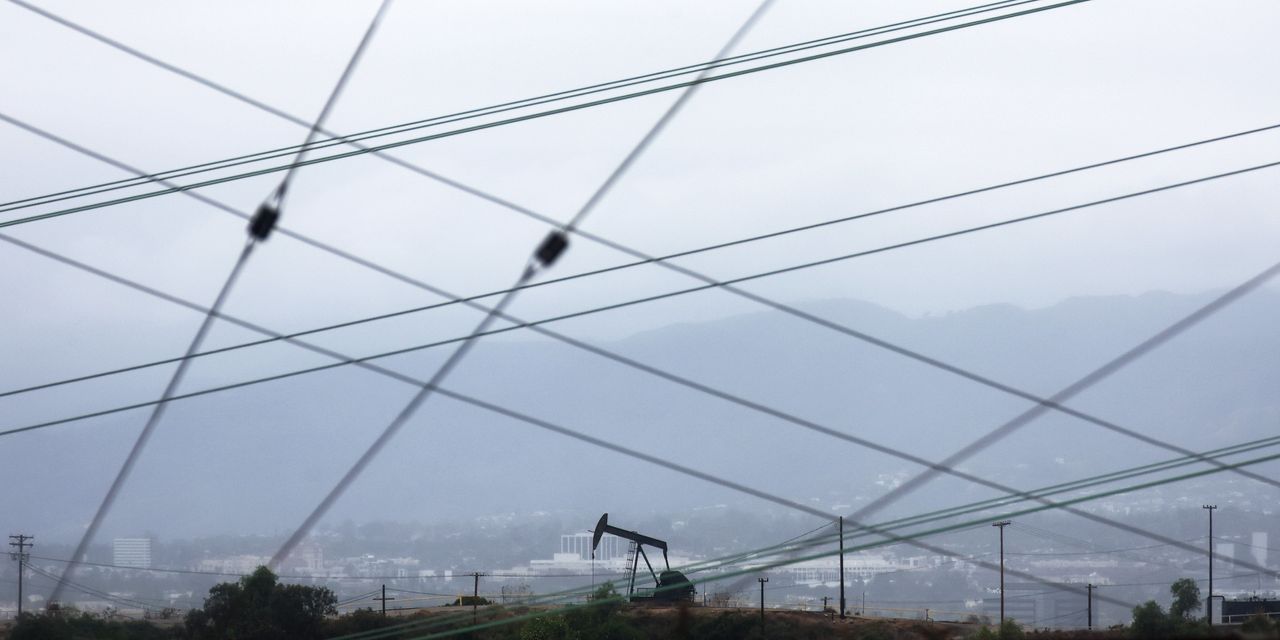U.S. and global benchmark oil prices marked their highest finish in three months on Monday, buoyed by what one analyst referred to as “unquenched thirst for summer oil” and bets for tighter global crude supplies later this year.
Price action
-
West Texas Intermediate crude for September delivery
CL.1,
-0.46% CL00,
-0.46% CLU23,
-0.46%
rose $1.67, or 2.2%, to settle at $78.74 a barrel on the New York Mercantile Exchange. That was the highest front-month finish since April 24, according to Dow Jones Market Data. -
September Brent
BRN00,
-0.49% BRNU23,
-0.49% ,
the global benchmark, added $1.67, or 2.2%, at $82.74 a barrel on ICE Futures Europe, the highest since April 19. -
Back on Nymex, August gasoline
RBQ23,
-0.49%
rose 3.3% to $2.90 a gallon — the highest since late October, while August heating oil
HOQ23,
-0.45%
advanced 0.9% to $2.77 a gallon, the highest since March. -
August natural gas
NGQ23,
-0.22%
lost 1% at $2.69 per million British thermal units.
Market drivers
“The unquenched thirst for summer oil created a snowball effect that has led to a multi-week rally” in oil prices, said Manish Raj, managing director at Velandera Energy Partners.
Export cuts from Saudi Arabia and Russia have led to Asian buyers “looking for U.S.-sourced WTI,” he said. Asian refiners booked near-record volumes of U.S. crude to be shipped in August, Reuters reported late last week, citing trade sources.
“The usual suspects are at play [for oil] — continued demand growth in the American summer, handsome recovery in China and robust outlook in India, while supply remains constrained,” Raj said.
The Organization of the Petroleum Exporting Countries is “laughing all the way to the bank, while long traders don’t want to miss the boat on the highest anticipated [second-half of the year supply] shortage,” he said. OPEC appears prepared to “walk the whole nine yards in order to fight low prices, while U.S. drillers have given a “cold shoulder to bringing on new supply in light of skyrocketing drilling inflation and shortage of frac fleet,” referring to hydraulic fracturing equipment.
Data from Baker Hughes Friday revealed a sixth straight weekly decline in the number of active U.S. oil-drilling rigs.
WTI and Brent crude rose 2.3% and 1.5%, respectively, last week. Oil prices remain lower year to date but have found their footing on expectations the physical market will move into deficit over the second half of the year.
Supply cuts by Saudi Arabia and Russia have helped underpin those expectations.
The United Arab Emirates Energy Minister Suhail al-Mazrouei reportedly stated that current OPEC actions are sufficient to “balance the market” and that if any further action is required it can be addressed at the next meeting, StoneX’s Kansas City energy team, led by Alex Hodes, wrote in Monday’s newsletter.
The latest round of supply cuts do “appear to have tightened the oil market,” the StoneX team said.
Traders are also looking ahead to the “host of central bank decisions during the week, where the main attention will be on the U.S. Federal Reserve,” said Jameel Ahmad, chief analyst at GTC, a trading brokerage based in Dubai.
The U.S. central bank is expected to indicate that interest rates in the United States have peaked following another interest-rate hike, but “expectations that China, through the People’s Bank of China, will unleash stimulus to support the Chinese economy (in turn supporting global growth prospects) seems to be encouraging traders to keep hold of their oil positions,” he said in emailed commentary.
The Fed will conclude its policy meeting on Wednesday, while policy decisions will be delivered by the European Central Bank on Thursday and the Bank of Japan on Friday.
See: Everyone thinks the Fed’s rate hike this week will be the final one — except the Fed
“As we approach the second half of 2023 trading and with global economic health concerns unlikely to go away, while central banks across developed markets are resistant to reduce interest rates with inflationary pressures still historically high, we would need a complete rebound in global economic sentiment into optimism to maintain that oil should remain above $80 over the longer-run,” said Ahmad.
Also read: Stocks are making a run for record territory. Will the Fed end its rate hikes anyway?
Read the full article here



